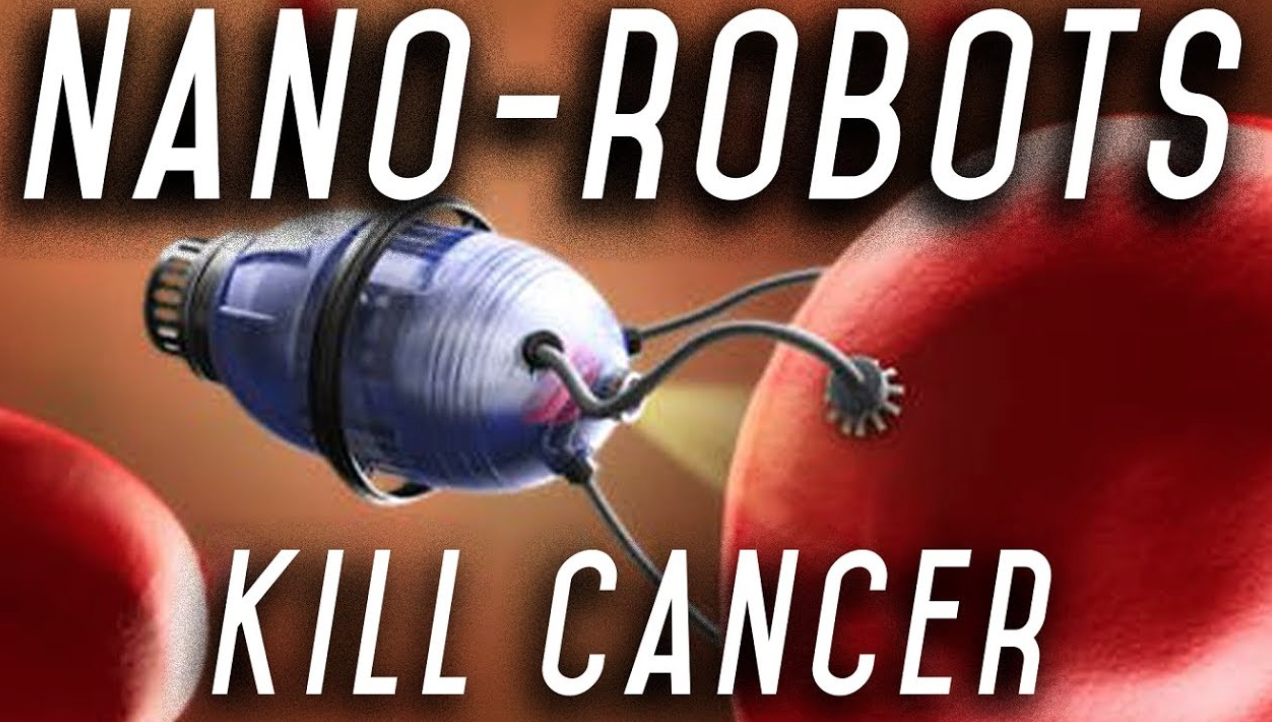CANCER NANOTHERAPY

BY GRACE HUNNINGS – Robots exist everywhere—from science fiction to local hospitals—and they are developing fast under today’s healthcare system. Since the decade-old introduction of the first robotic surgical assistant, the use of robotics has been advancing rapidly in healthcare. Robots today are highly innovative and primarily responsible for relieving medical personnel from routine tasks by monitoring patient’s vitals, imaging probes, and functioning as cargo delivery vehicles. Serving as an early adaptation of modern technology, robots can also function as a marketing tool, allowing medical staff to focus on more daunting tasks and responsibilities. In turn, this can result in a reduced need for additional medical personnel at healthcare clinics and hospitals.
A recent eye-catching discovery involving mice has also been linked the use of robots. These robots have the potential to function as vehicles to cure cancer in mice, where they most closely resemble microscopic forms of the well-known Star Wars fictional character, R2D2. They are surrounded with single-stranded codes of DNA origami that are folded into a desired shape, acting similarly to the coating around a tablet that decomposes and releases a drug when orally swallowed. These DNA robots seek out cancerous tumors and inject them with drugs that can cut off their blood supply and kill them. The robots will deliver thrombin, an enzyme in blood plasma, to the tumor blood vessels and induce intravascular thrombosis, where blood clots form within the vessels. This will result in tumor necrosis, or the death of these cells due to the failure of the blood supply.
According to Nature Biotechnology, scientists behind the study were injecting these nanobots into mice with human breast cancer tumors. Astonishingly, within 48 hours, these bots successfully allowed for the formation of blood clots in the tumor’s blood vessels. Even more remarkable, these nanobots did not cause blood clotting in any other part of the body, only in the tumor cells they were programmed to target. Additionally, this team of scientists have proven these bots yield similar results in Bama miniature pigs, where they did not cause clotting or additional healthy tissues.
Bar-Illan professor Ido Bachelet, who earned his Ph.D. in medical sciences from the Hebrew University in Jerusalem, has led a team that discovered how DNA robots are able to recognize 12 different types of cancer cells. His team is now working to program different behaviors into these nanobots, where they will be designed for future applications such as nerve or tissue repair.
Teams of scientists are continuing to discover substantial findings that only further justify the benefits of using these nanobots. These discoveries are helping to diminish the fears associated with using these bots in larger animals, therefore opening up the idea of the eventual use of these nanobots in humans. For these scientists, the goal is to prove that these nanobots are capable of producing the same results in humans, although more work will necessary before human trials are possible.
Overall, these results are shown as huge breakthroughs within cancer research. Current methods of curing cancer involve destroying many other cells besides the cancer cells. If this robotic technique is proved applicable to humans, it could have monumental effects on those stricken with the disease.
